June 29, 2004
June 28, 2004
Here's an Internet history of the Internet
Here's a collection of more than 80,000 Chinese symbols in gif or jpg format.

'danger' + 'opportunity'=crisis
Students, teachers and stargazers alike can have a lot of fun while learning about
Infrared Astronomy at Cool Cosmos, an educational portal developed by NASA and Cal Tech aimed at nurturing and teaching the young minds of the future.
Exceptionally cool! Check it out! {Example below}

Frogs are cold-blooded amphibians and appear cool in the infrared because they cannot generate their own body heat. Instead they have temperatures which are close to that of their environment. Notice how dark (cool) this frog appears compared to the warm hand holding it.

The Smithsonian American Art Museum has an exhibit entitled, Posters, American Style, which offers an interesting look into how people have used these images historically to convey their messages of commerce, protest, patriotism and propaganda.
Check out all the Library Exhibits at the University of Buffalo
Here's a collection of more than 80,000 Chinese symbols in gif or jpg format.

'danger' + 'opportunity'=crisis

Students, teachers and stargazers alike can have a lot of fun while learning about
Infrared Astronomy at Cool Cosmos, an educational portal developed by NASA and Cal Tech aimed at nurturing and teaching the young minds of the future.
Exceptionally cool! Check it out! {Example below}

Frogs are cold-blooded amphibians and appear cool in the infrared because they cannot generate their own body heat. Instead they have temperatures which are close to that of their environment. Notice how dark (cool) this frog appears compared to the warm hand holding it.

The Smithsonian American Art Museum has an exhibit entitled, Posters, American Style, which offers an interesting look into how people have used these images historically to convey their messages of commerce, protest, patriotism and propaganda.
Check out all the Library Exhibits at the University of Buffalo
June 26, 2004
We just talked about Google Fight recently; today ww've found SearchFight Search Fight is like Google Fight only you can try your fight across multiple search engines. This is a good way to get a sense about the size of different search engines, too.
The Librarians' Index to the Internet (LII) has an extensive collection of links related to the Olympics
Olympics fans, whether you are sports fans otherwise, need to check this out
NewsLookup is interesting in that you can break out your results by source type (Magazine, Radio, Newspapers, Internet) and other variables with six pull-down menus underneath the query box.
The Librarians' Index to the Internet (LII) has an extensive collection of links related to the Olympics
Olympics fans, whether you are sports fans otherwise, need to check this out
NewsLookup is interesting in that you can break out your results by source type (Magazine, Radio, Newspapers, Internet) and other variables with six pull-down menus underneath the query box.
June 24, 2004
What is the one word you will always hear, day after day, for the rest of your life? The answer is your name.
But where do these names come from?
The meaning behind your name can be found at Behindthename.com, which lists the etymology behind thousands of first names.
There is also a vast amount of information on other related topics, such as instructions on how to change your name, the correct pronunciation of your name in foreign languages, even a list of the Most Popular names in the world.
I'll know you'll look for your name first
The Ancient World Mapping Center, based out of the University of North
Carolina, works to maintain the importance of cartography and geographic study within the field of Ancient History. The organization's slogan is "mapping the ancient world, from Athens to Zucchabar"
From Ed Zuckerman's Gov't News & Info
NIH Offers New Resources to Better Understand Sleep
High School Curriculum Joins Garfield Star Sleeper Campaign As Latest in Materials for Adolescents and Children
Just what teenagers need - information about sleep
But where do these names come from?
The meaning behind your name can be found at Behindthename.com, which lists the etymology behind thousands of first names.
There is also a vast amount of information on other related topics, such as instructions on how to change your name, the correct pronunciation of your name in foreign languages, even a list of the Most Popular names in the world.
I'll know you'll look for your name first
The Ancient World Mapping Center, based out of the University of North
Carolina, works to maintain the importance of cartography and geographic study within the field of Ancient History. The organization's slogan is "mapping the ancient world, from Athens to Zucchabar"
From Ed Zuckerman's Gov't News & Info
NIH Offers New Resources to Better Understand Sleep
High School Curriculum Joins Garfield Star Sleeper Campaign As Latest in Materials for Adolescents and Children
Just what teenagers need - information about sleep
June 22, 2004
Remote Catholic Community Maintains Faith Without Priest For 50 Years
From the Asia News
Catholics in a remote mountain area of southwestern China continue to keep their faith alive, even though no priest has been stationed there for more than five decades.
Hu Junjie, a 64-year-old local lay leader, stated June 10 that despite the lack of a resident priest, about 5,000 Catholics, mainly Drung, Lisu, Nu and Tibetan ethnic minorities, in Gongshan Drungzu Nuzu Autonomous County in northwestern Yunnan province pray together daily. Gongshan, adjacent to Tibet Autonomous Region, is about 2,120 kilometers southwest of Beijing.
Hu, a Drung ethnic, also said that local Catholics have not only maintained their faith, they have also evangelized. During winter time when there was no farm work to do, he explained, Catholics would go in groups of two or three to visit and preach to non-Catholic villagers at their homes.
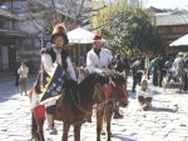
Gongshan has Chinese and Tibetan ethnic minorities

Given the many different ethnic minority groups in the county, Hu said it was hard to use the Bible to evangelize in that area because the Bible is available only in Chinese, Tibetan and Lisu. That is why Catholics here use hymns as a medium to spread the Good News instead, he pointed out. According to Hu, his own 100-year-old father has led other lay leaders in organizing catechism classes in Chinese, Lisu and Tibetan every winter.
Father Paul Chen Kaihua of Kunming diocese in the same province said that after learning about the community from one of his diocese' faithful, he has been visiting them twice a year since January 2002. Father Chen said he was impressed by their faith. Despite the absence of a priest, he said the number of churches has grown to 15 from the three established before the communists came to power in 1949. The number of Catholics also grew from 1,000 to 5,000, thanks to the laypeople's evangelization endeavor. French missioners served the area before 1949.
{Read the rest here}
Find A Book In A Library
I was trying to get some information on an old book, and I stumbled across a "Google hit" that said "Find in a Library", which took me to something called WorldCat
I'll try to explain how it works, because it's a little tricky.
First, pick an old book. I like The Story of Man, by Carleton S. Coon. It's a history of the world, told from an anthropological perspective.
Let's go look for it.
First, we go to Google
We type in "Find in a Library" "The Story of Man" in the window.
Our 6th Result is
You'll be asked to input your zip code. I've found that once you've entered your zip code, it will continue to appear until you change it, for the next title you put in. Once it's input, then, voíla, out will come a list of libraries, in your area, where you can find the book.
The good part is that all the information you need to locate the book in libraries closer to home is there for you.
Cool, eh!?
I was trying to get some information on an old book, and I stumbled across a "Google hit" that said "Find in a Library", which took me to something called WorldCat
I'll try to explain how it works, because it's a little tricky.
First, pick an old book. I like The Story of Man, by Carleton S. Coon. It's a history of the world, told from an anthropological perspective.
Let's go look for it.
First, we go to Google
We type in "Find in a Library" "The Story of Man" in the window.
Our 6th Result is
Find in a Library: The story of man; from the first human to ...Click on that result, and you'll be sent to a page called WorldCat, even though the URL Title is Local Libraries.
The story of man; from the first human to primitive culture and beyond.
* By: Carleton Stevens Coon * Publisher: New York, Knopf, 1954. ...
worldcatlibraries.org/wcpa/ow/8ad0f9d47373cc78.html - Similar pages
You'll be asked to input your zip code. I've found that once you've entered your zip code, it will continue to appear until you change it, for the next title you put in. Once it's input, then, voíla, out will come a list of libraries, in your area, where you can find the book.
The good part is that all the information you need to locate the book in libraries closer to home is there for you.
Cool, eh!?
June 21, 2004
From Refdesk.com
Subscribe to Daily Mailings
The History of Social Security
This site contains one of the largest and most extensive collections of history-related materials in the federal government. We present here both the institutional history of the Social Security Administration and the history of the Social Security program itself.
National Weather Service
The National Weather Service (NWS) provides weather, hydrologic, and climate forecasts and warnings for the United States, its territories, adjacent waters and ocean areas, for the protection of life and property and the enhancement of the national economy. NWS data and products form a national information database and infrastructure which can be used by other governmental agencies, the private sector, the public, and the global community
Earth As Art: A Landsat Perspective
This exhibition showcases Landsat 7 images, from the collection of Landsat photographs held in the Geography and Map Division, which have been selected for aesthetic rather than scientific value.
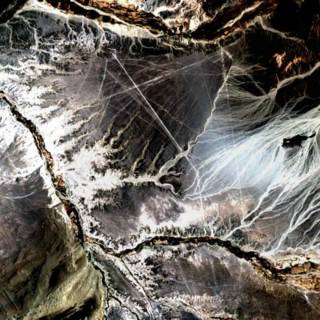
In the desert of southwest Peru, between the Andes Mountains and the Peruvian coast, lie huge geometric patterns and spirals, animal figures including a monkey, a spider and an 'owl man', and thousands of perfectly straight lines are immaculately etched onto the desert's surface. Known as the Nacza lines, the drawings have mystified scientists since they were first discovered in the 1920s.

These images are actual pictures of the Earth, created by printing visible and infrared data in colors visible to the human eye. Band combinations and colors were chosen to optimize their dramatic appearance
Subscribe to Daily Mailings
The History of Social Security
This site contains one of the largest and most extensive collections of history-related materials in the federal government. We present here both the institutional history of the Social Security Administration and the history of the Social Security program itself.
National Weather Service
The National Weather Service (NWS) provides weather, hydrologic, and climate forecasts and warnings for the United States, its territories, adjacent waters and ocean areas, for the protection of life and property and the enhancement of the national economy. NWS data and products form a national information database and infrastructure which can be used by other governmental agencies, the private sector, the public, and the global community
Earth As Art: A Landsat Perspective
This exhibition showcases Landsat 7 images, from the collection of Landsat photographs held in the Geography and Map Division, which have been selected for aesthetic rather than scientific value.

In the desert of southwest Peru, between the Andes Mountains and the Peruvian coast, lie huge geometric patterns and spirals, animal figures including a monkey, a spider and an 'owl man', and thousands of perfectly straight lines are immaculately etched onto the desert's surface. Known as the Nacza lines, the drawings have mystified scientists since they were first discovered in the 1920s.

These images are actual pictures of the Earth, created by printing visible and infrared data in colors visible to the human eye. Band combinations and colors were chosen to optimize their dramatic appearance
June 19, 2004
From Uncle Url's Linky & Dinky
The TerraServer-USA Web site is one of the world's largest online databases, providing free public access to a vast data store of maps and aerial photographs of the United States. TerraServer is designed to work with commonly available computer systems and Web browsers over slow speed communications links. The TerraServer name is a play on words, with 'Terra' referring to the 'earth' or 'land' and also to the terabytes of images stored on the site.
A companion site to TerraServer-USA is Earth View, a view of the Earth from the Sun.
Check out LivingEarth.com
Learn more about dice than you'd care to know at Kevin Cook's Dice Collection Website
IMBD.com is the King of Movie info on the internet. Now they have hard-hitting investigative journalism to report on Celebrities, too!
Check out http://www.imdb.com/news/wenn/#1
Interested in paper folding? Go to - where else - paperfolding.com
Do you remember Sniglets? Words that don't exist, but should?
Bert Christiansen has assembled a bunch of them here
Check out the whole site
NASA's Astronomy Picture of the Day is now archived -- back to June of 1995
Are you ready for a GoogleWar?
Which will get more hits? Pepsi vs Coke? Salami vs Bologna? France vs Germany?
Give it a go
THE FEDS ARE WATCHING YOUR INTERNET USAGE VERY CLOSELY
Every click you make, every screen name you fake
They've got their eyes on you
Here's Quotecha - 54,000 interesting things to say about different subjects.
Butterflies! Butterflies! Butterflies!
If you don't know the difference between a comma and an apostrophe, you might not want to play the Punctuation Game
If you were like me, when you played with an Etch - a - Sketch, the best you could do was to scrawl your first name, or to "draw" a log cabin.
George Vlosich III has kicked Etch - a - Sketch up to "notches unknown"
Don't miss the Gallery
More Cool Stuff I Don't Understand
He's going to solve a 20 X 20 X 20 Cube.
I don't know what that means, but I'm impressed.
For more incomprehensible stuff, see here and here
This site gives new, and beautiful, meaning to "Up in smoke"
You know you want to check out the Bubble Gum Bubble Blowing Hall of Fame
The TerraServer-USA Web site is one of the world's largest online databases, providing free public access to a vast data store of maps and aerial photographs of the United States. TerraServer is designed to work with commonly available computer systems and Web browsers over slow speed communications links. The TerraServer name is a play on words, with 'Terra' referring to the 'earth' or 'land' and also to the terabytes of images stored on the site.
A companion site to TerraServer-USA is Earth View, a view of the Earth from the Sun.
Check out LivingEarth.com
Learn more about dice than you'd care to know at Kevin Cook's Dice Collection Website
IMBD.com is the King of Movie info on the internet. Now they have hard-hitting investigative journalism to report on Celebrities, too!
Check out http://www.imdb.com/news/wenn/#1
Interested in paper folding? Go to - where else - paperfolding.com
Do you remember Sniglets? Words that don't exist, but should?
Bert Christiansen has assembled a bunch of them here
Check out the whole site
NASA's Astronomy Picture of the Day is now archived -- back to June of 1995
Are you ready for a GoogleWar?
Which will get more hits? Pepsi vs Coke? Salami vs Bologna? France vs Germany?
Give it a go
THE FEDS ARE WATCHING YOUR INTERNET USAGE VERY CLOSELY
Every click you make, every screen name you fake
They've got their eyes on you
Here's Quotecha - 54,000 interesting things to say about different subjects.
Butterflies! Butterflies! Butterflies!
If you don't know the difference between a comma and an apostrophe, you might not want to play the Punctuation Game
If you were like me, when you played with an Etch - a - Sketch, the best you could do was to scrawl your first name, or to "draw" a log cabin.
George Vlosich III has kicked Etch - a - Sketch up to "notches unknown"
Don't miss the Gallery
More Cool Stuff I Don't Understand
He's going to solve a 20 X 20 X 20 Cube.
I don't know what that means, but I'm impressed.
For more incomprehensible stuff, see here and here
This site gives new, and beautiful, meaning to "Up in smoke"
You know you want to check out the Bubble Gum Bubble Blowing Hall of Fame
June 18, 2004
All-black towns play rich role in Oklahoma history
The Oklahoman
Matthew Brady
Jun 18 04
To a black person in the 1890s, Oklahoma Territory seemed a land of possibilities.
All-black towns sprang up overnight. Talk of creating an all-black state in the territory got as far as Congress.
The opportunities - fueled by newspaper ads from land speculators - attracted thousands of blacks nationwide eager to test the freedom that until then had been little more than words on paper.
"It was an opportunity for them to escape from the racism in the South, an opportunity to prove themselves to whites," said Hannibal B. Johnson, historian and author of Acres of Aspiration: The All-Black Towns in Oklahoma.
Johnson narrated a bus tour Saturday of three of Oklahoma's more than 50 historically all-black towns.
The tour, sponsored by the Tulsa City-County Library, is in its sixth year. That it taps into a hunger for black history is evident in the waiting list each year for one of about 90 seats on two charter buses.
Tour organizer Kim Johnson said she could fill three buses, but the towns they visit ?simply can't handle more than two ...
{Read the rest here}
The Oklahoman
Matthew Brady
Jun 18 04
To a black person in the 1890s, Oklahoma Territory seemed a land of possibilities.
All-black towns sprang up overnight. Talk of creating an all-black state in the territory got as far as Congress.
The opportunities - fueled by newspaper ads from land speculators - attracted thousands of blacks nationwide eager to test the freedom that until then had been little more than words on paper.
"It was an opportunity for them to escape from the racism in the South, an opportunity to prove themselves to whites," said Hannibal B. Johnson, historian and author of Acres of Aspiration: The All-Black Towns in Oklahoma.
Johnson narrated a bus tour Saturday of three of Oklahoma's more than 50 historically all-black towns.
The tour, sponsored by the Tulsa City-County Library, is in its sixth year. That it taps into a hunger for black history is evident in the waiting list each year for one of about 90 seats on two charter buses.
Tour organizer Kim Johnson said she could fill three buses, but the towns they visit ?simply can't handle more than two ...
{Read the rest here}
From PC Magazine:
Future TiVos Will Download Content From The Net
ExtremeTech
Mark Hachman
Jun 9 2004
TiVo Inc. said Tuesday that it is taking steps toward allowing its PVRs to access content from the Web. The personal-video-recorder company will also allow subscribers access to certain multimedia options it once reserved for premium customers.
TiVo's representatives confirmed that they are working toward a future that will allow their personal-video-recorder devices to access music and movies downloaded from the Internet. Currently, the boxes only allow content to be recorded from television broadcasts, although a Home Media option also allows those recordings to be scheduled via the Internet. Users may also view pictures and listen to music stored on a PC.
Future TiVos Will Download Content From The Net
ExtremeTech
Mark Hachman
Jun 9 2004
TiVo Inc. said Tuesday that it is taking steps toward allowing its PVRs to access content from the Web. The personal-video-recorder company will also allow subscribers access to certain multimedia options it once reserved for premium customers.
TiVo's representatives confirmed that they are working toward a future that will allow their personal-video-recorder devices to access music and movies downloaded from the Internet. Currently, the boxes only allow content to be recorded from television broadcasts, although a Home Media option also allows those recordings to be scheduled via the Internet. Users may also view pictures and listen to music stored on a PC.
June 17, 2004
Teleportation breakthrough made
BBC News Online science staff
Paul Rincon
Jun 16 04
Scientists have performed successful teleportation on atoms for the first time, the journal Nature reports.
The feat was achieved by two teams of researchers working independently on the problem in the US and Austria.
The ability to transfer key properties of one particle to another without using any physical link has until now only been achieved with laser light.
Experts say being able to do the same with massive particles like atoms could lead to new superfast computers.
This development is a long way from the transporters used by Jean-Luc Picard and Captain Kirk in the famous Star Trek TV series.
{Read more here}

All clear, now?
BBC News Online science staff
Paul Rincon
Jun 16 04
Scientists have performed successful teleportation on atoms for the first time, the journal Nature reports.
The feat was achieved by two teams of researchers working independently on the problem in the US and Austria.
The ability to transfer key properties of one particle to another without using any physical link has until now only been achieved with laser light.
Experts say being able to do the same with massive particles like atoms could lead to new superfast computers.
This development is a long way from the transporters used by Jean-Luc Picard and Captain Kirk in the famous Star Trek TV series.
{Read more here}

All clear, now?

9 million wayward bees rounded up after truck crash
From the Bozeman Daily Chronicle, comes the story of Lane Miller, who not only survived a tractor-trailer crash Monday afternoon, but also the wrath of 9 million infuriated honey bees.
Miller was hauling a load of 512 bee hives from Idaho to North Dakota on a flatbed trailer Monday afternoon. He lost control of the rig on a curve in Bear Trap Canyon on Norris Road, overturned and slid across the road before coming to a stop between the guardrails.
From the Bozeman Daily Chronicle, comes the story of Lane Miller, who not only survived a tractor-trailer crash Monday afternoon, but also the wrath of 9 million infuriated honey bees.
Miller was hauling a load of 512 bee hives from Idaho to North Dakota on a flatbed trailer Monday afternoon. He lost control of the rig on a curve in Bear Trap Canyon on Norris Road, overturned and slid across the road before coming to a stop between the guardrails.
June 16, 2004
Here's the North American Numbering Plan Adminstration (NANPA)
This site provides information about the North American Numbering Plan (NANP) and its administration. The NANP is the numbering plan for the Public Switched Telephone Network for Canada, the US and its territories, and the Caribbean.
It's where the Area Codes come from, and lots more. Check it out.
To check which area an Area Code comes from, go here

The Long Grove, IA switchboard
This site provides information about the North American Numbering Plan (NANP) and its administration. The NANP is the numbering plan for the Public Switched Telephone Network for Canada, the US and its territories, and the Caribbean.
It's where the Area Codes come from, and lots more. Check it out.
To check which area an Area Code comes from, go here

The Long Grove, IA switchboard

The British Library will be putting more than a million pages of 19th Century news going online19th Century news online
The ?2m project will cover 100 years of news and images from newspapers which are out of copyright.
At the moment, anyone wanting to look at the texts needs to visit the Newspaper Library in Colindale, North London.
A searchable website with digital copies of the newspapers is expected to be ready in 18 months' time.
The ?2m project will cover 100 years of news and images from newspapers which are out of copyright.
At the moment, anyone wanting to look at the texts needs to visit the Newspaper Library in Colindale, North London.
A searchable website with digital copies of the newspapers is expected to be ready in 18 months' time.
You've all seen website lists: 100 Web Sites you never heard of; 100 Web Sites you need to know about; the Best Family Sites on the Web, and on, and on, and on ...
Well, finally here are the People's Choices, from Activism to Youth. And the entire list is downloadable to a Word Document ( 2004WebbyWinnerList[1].doc )
Well, finally here are the People's Choices, from Activism to Youth. And the entire list is downloadable to a Word Document ( 2004WebbyWinnerList[1].doc )
Google planning desktop software search tool
From Forbes.com comes the news that Google, the Internet search company, is planning to release a file and text software search tool for finding information stored on a computer.
Google's software, expected to be introduced soon, will allow the company to offer tools to search the desktop, a domain now controlled by Microsoft Corp.
Upgraded technology for searching stored information on a personal computer will be part of Microsoft's upcoming version of its Windows operating system called Longhorn.
A Google representative was not immediately available to comment to Reuters.
Microsoft's Search function is definitely due for an overhaul
From Forbes.com comes the news that Google, the Internet search company, is planning to release a file and text software search tool for finding information stored on a computer.
Google's software, expected to be introduced soon, will allow the company to offer tools to search the desktop, a domain now controlled by Microsoft Corp.
Upgraded technology for searching stored information on a personal computer will be part of Microsoft's upcoming version of its Windows operating system called Longhorn.
A Google representative was not immediately available to comment to Reuters.
Microsoft's Search function is definitely due for an overhaul
PBS's American Experience has a great film called Miss America
Lots of interesting clips and facts, so be sure to check it out

This 1926 Long Beach Bathing Beauty could win a contest today
Lots of interesting clips and facts, so be sure to check it out

This 1926 Long Beach Bathing Beauty could win a contest today

June 15, 2004
From h2au.com
Water droplets, a bouncing phenomenon
A French scientific team from the College de France have studied the scene carefully with a camera that took 40000 images per second. Here are the results:
At first, when it hits the surface, the drop flattens. Then, it bounces up due to the movement energy it had when falling down. The drop will continue going upwards eventually taking the shape of a needle. Afterwards, the drop falls upon itself, into itself. It thus takes the shape of a pancake (again) but this time, the drop is in midair.
This phenomenon is different to a drop falling on other surfaces as in this case, the drop crashes on the surface leaving only a small quantity of the water to bounce up. Physicists have also found out that the actual speed of a drop influences its deformation but not the time taken for it to get in contact with the surface. This actually depends upon the mass of the drop.
Anyway why is all this stuff important anyway?"
Read the rest here
Water droplets, a bouncing phenomenon
A French scientific team from the College de France have studied the scene carefully with a camera that took 40000 images per second. Here are the results:
At first, when it hits the surface, the drop flattens. Then, it bounces up due to the movement energy it had when falling down. The drop will continue going upwards eventually taking the shape of a needle. Afterwards, the drop falls upon itself, into itself. It thus takes the shape of a pancake (again) but this time, the drop is in midair.
This phenomenon is different to a drop falling on other surfaces as in this case, the drop crashes on the surface leaving only a small quantity of the water to bounce up. Physicists have also found out that the actual speed of a drop influences its deformation but not the time taken for it to get in contact with the surface. This actually depends upon the mass of the drop.
Anyway why is all this stuff important anyway?"
Read the rest here
June 14, 2004
From MSNBC
Newsweek
Dec 8 2004
How Genes Affect Moods
Insights from Harvard Medical School
Michael C. Miller, M.D.
Genes don't stop working the day we're born. They're active throughout life, switching on and off in response to cues from the environment. Unfortunately, they don't always respond in optimal ways. For every 100 people born, one ends up with schizophrenia, one develops bipolar disorder and 20 experience some form of depression. Heredity may account for as much as 80 percent of the risk for these illnesses, but we still know little about how, exactly, genes affect our risk. Fortunately, scientists are starting to find clues.
Read the rest here
Read more here
Newsweek
Dec 8 2004
How Genes Affect Moods
Insights from Harvard Medical School
Michael C. Miller, M.D.
Genes don't stop working the day we're born. They're active throughout life, switching on and off in response to cues from the environment. Unfortunately, they don't always respond in optimal ways. For every 100 people born, one ends up with schizophrenia, one develops bipolar disorder and 20 experience some form of depression. Heredity may account for as much as 80 percent of the risk for these illnesses, but we still know little about how, exactly, genes affect our risk. Fortunately, scientists are starting to find clues.
Read the rest here
Read more here
From the University of Buffalo
Historic Bentley Snow Crystal Collection Available Again
Thanks to a Digital Library Produced by UB Students the Historic Bentley Snow Crystal Collection will be available again.
Bentley was America's first cloud physicist. He made 10,000 glass photomicrographic plates between 1880 and 1926, upon which he captured the images of 5,000 individual snow crystals and 5,000 images of dew and frost. This collection has been held since the 1930s by the Buffalo Museum of Science, although its fragility has prevented its widespread use by researchers or the public.
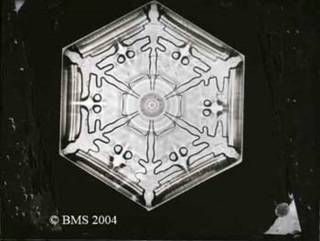
P1a Snowflake: Hexagonal plate Great blizzard snow crystals

Over the years, the glass plates deteriorated, however, and the work of Wilson Alwyn Bentley might have been lost forever to researchers and the public, had not a group of graduate students from the University at Buffalo stepped in to save it for posterity.
Bentley's images now are available to the public, thanks to graduate students in the UB School of Informatics, who have developed a fully operational digital library for the Wilson A. Bentley Snow Crystal Collection.
Read the rest here
Historic Bentley Snow Crystal Collection Available Again
Thanks to a Digital Library Produced by UB Students the Historic Bentley Snow Crystal Collection will be available again.
Bentley was America's first cloud physicist. He made 10,000 glass photomicrographic plates between 1880 and 1926, upon which he captured the images of 5,000 individual snow crystals and 5,000 images of dew and frost. This collection has been held since the 1930s by the Buffalo Museum of Science, although its fragility has prevented its widespread use by researchers or the public.

P1a Snowflake: Hexagonal plate Great blizzard snow crystals

Over the years, the glass plates deteriorated, however, and the work of Wilson Alwyn Bentley might have been lost forever to researchers and the public, had not a group of graduate students from the University at Buffalo stepped in to save it for posterity.
Bentley's images now are available to the public, thanks to graduate students in the UB School of Informatics, who have developed a fully operational digital library for the Wilson A. Bentley Snow Crystal Collection.
Read the rest here
From the Lexindton Herald - Leader
Vatican's 15th-century library goes high-tech
Nicole Winfield
Associated Press
Jun 12 2004
VATICAN CITY Dealing with bug infestations, normal wear and tear and even the occasional thief, keepers of the 15th-century Vatican Apostolic Library face an ever-challenging task. Their latest step to keep their invaluable collection intact has been to employ some 21st-century technology.
Officials have started implanting computer chips in the 1.6 million books in the Vatican's collection. The chips communicate via radio wave with hand-held monitors, so librarians can tell if a book is missing.
"That is no small thing, because a book that's out of place is as if the book is lost," deputy prefect Ambrogio Piazzoni says.
The technology has been around for a few years. But the Vatican believes its Pergamon system -- named for the ancient city in modern Turkey that housed one of the Old World's greatest libraries -- marks the first time the system has been applied to a library catalog on a large scale.
It's the latest advance for the Vatican Library, which was started by Pope Nicholas V in the 1450s with an initial 350 Latin manuscripts. By the time Nicholas died in 1455, the collection had swelled to about 1,500 codices and was the largest in Europe.
Today, the Vatican Library is known for its collection of about 65,000 manuscripts, the one-of-a-kind books that predate the printing press. One of the library's most important pieces is the Codex B, the oldest known complete Bible, which dates from about A.D. 325 and is thought to be one of the 50 bibles Emperor Constantine commissioned.
The library also is home to 300,000 medals and Roman-era coins.
Read the rest here
Vatican's 15th-century library goes high-tech
Nicole Winfield
Associated Press
Jun 12 2004
VATICAN CITY Dealing with bug infestations, normal wear and tear and even the occasional thief, keepers of the 15th-century Vatican Apostolic Library face an ever-challenging task. Their latest step to keep their invaluable collection intact has been to employ some 21st-century technology.
Officials have started implanting computer chips in the 1.6 million books in the Vatican's collection. The chips communicate via radio wave with hand-held monitors, so librarians can tell if a book is missing.
"That is no small thing, because a book that's out of place is as if the book is lost," deputy prefect Ambrogio Piazzoni says.
The technology has been around for a few years. But the Vatican believes its Pergamon system -- named for the ancient city in modern Turkey that housed one of the Old World's greatest libraries -- marks the first time the system has been applied to a library catalog on a large scale.
It's the latest advance for the Vatican Library, which was started by Pope Nicholas V in the 1450s with an initial 350 Latin manuscripts. By the time Nicholas died in 1455, the collection had swelled to about 1,500 codices and was the largest in Europe.
Today, the Vatican Library is known for its collection of about 65,000 manuscripts, the one-of-a-kind books that predate the printing press. One of the library's most important pieces is the Codex B, the oldest known complete Bible, which dates from about A.D. 325 and is thought to be one of the 50 bibles Emperor Constantine commissioned.
The library also is home to 300,000 medals and Roman-era coins.
Read the rest here
June 13, 2004
From Mirabilis.ca, comes a story concerning a strange instrument called an Ondes-Martenot

A concert version of the Ondes - Martenot
Maurice Martenot a Cellist and radio Telegraphist {see below}, met the Russian designer of the Theremin, Leon Termen in 1923, this meeting lead him to design an instrument based on Termens ideas, the first model, the 'Ondes-Martenot' was patented on the 2nd of April 1928 under the name 'Perfectionnements aux instruments de musique électriques' (improvements to electronic music instruments).
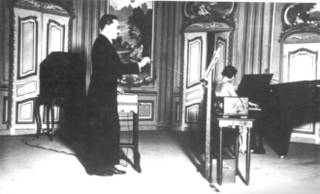
On the stage at the Paris Opera, May 3, 1928
His aim was to produce a versatile electronic instrument that was immediately familiar to orchestral musicians. The first versions bore little resemblance to the later production models: consisting of two table mounted units controlled by a performer who manipulated a string attached to a finger ring (using the bodies capacitance to control the sound characteristics in a manner very similar to the Theremin) this device was later incorporated as a fingerboard strip above the keyboard. Later versions used a standard keyboard.
The Ondes-Martenot became the first succesful electronic instrument and the only one of its generation that is still used by orchestras today, Martenot himself became, 20 years after its invention, a professor at the Paris Conservatoire teaching lessons in the Ondes-Martenot.
The Ondes-Martenot's success was the Theremin's loss, although both used the vacuum tube oscillator as a sound source and were both monophonic, where the Theremin had a sliding scale and no fixed preset notes the Ondes-Martenot had a keyboard and a strip control for glissando and vibrato and an appearance that was familiar to any keyboard player.
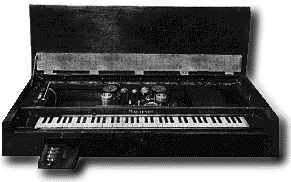
An early version of the Ondes - Martenot
The instrument also had a bank of expression keys that allowed the player to change the timbre and character of the sounds. A later (1938) version of the instrument featured microtonal tuning as specified by the Hindu poet Rabindranath Tagore and the musician Alain Danielou.
The Ondes-Martenot was quickly accepted and eventually had a wide repetoire, works were written for the instrument by composers such as Edgard Varèse, Olivier Messian (The "Turangalîla Symphonie" and "Trois Petites Liturgies de la Presence Divine" amongst others ),Darius Milhaud , Arthur Honegger, Maurice Jarre, Jolivet and Koechlin.

A concert version of the Ondes - Martenot

Maurice Martenot a Cellist and radio Telegraphist {see below}, met the Russian designer of the Theremin, Leon Termen in 1923, this meeting lead him to design an instrument based on Termens ideas, the first model, the 'Ondes-Martenot' was patented on the 2nd of April 1928 under the name 'Perfectionnements aux instruments de musique électriques' (improvements to electronic music instruments).

On the stage at the Paris Opera, May 3, 1928

His aim was to produce a versatile electronic instrument that was immediately familiar to orchestral musicians. The first versions bore little resemblance to the later production models: consisting of two table mounted units controlled by a performer who manipulated a string attached to a finger ring (using the bodies capacitance to control the sound characteristics in a manner very similar to the Theremin) this device was later incorporated as a fingerboard strip above the keyboard. Later versions used a standard keyboard.
The Ondes-Martenot became the first succesful electronic instrument and the only one of its generation that is still used by orchestras today, Martenot himself became, 20 years after its invention, a professor at the Paris Conservatoire teaching lessons in the Ondes-Martenot.
The Ondes-Martenot's success was the Theremin's loss, although both used the vacuum tube oscillator as a sound source and were both monophonic, where the Theremin had a sliding scale and no fixed preset notes the Ondes-Martenot had a keyboard and a strip control for glissando and vibrato and an appearance that was familiar to any keyboard player.

An early version of the Ondes - Martenot

The instrument also had a bank of expression keys that allowed the player to change the timbre and character of the sounds. A later (1938) version of the instrument featured microtonal tuning as specified by the Hindu poet Rabindranath Tagore and the musician Alain Danielou.
The Ondes-Martenot was quickly accepted and eventually had a wide repetoire, works were written for the instrument by composers such as Edgard Varèse, Olivier Messian (The "Turangalîla Symphonie" and "Trois Petites Liturgies de la Presence Divine" amongst others ),Darius Milhaud , Arthur Honegger, Maurice Jarre, Jolivet and Koechlin.
June 11, 2004
THE PAOMNNEHAL PWEOR OF THE HMUAN MNID
Cdnuolt blveiee taht I cluod aulaclty uesdnatnrd waht I was rdgnieg.
Aoccdrnig to a rscheearch at Cmabrigde Uinervtisy, it deosn't mttaer in waht oredr the ltteers in a wrod are, the olny iprmoatnt tihng is taht the frist and lsat ltteer be in the rghit pclae. The rset can be a taotl mses and you can sitll raed it wouthit porbelm. Tihs is bcuseae the huamn mnid deos not raed ervey lteter by istlef, but the wrod as a wlohe.
Amzanig huh?
Cdnuolt blveiee taht I cluod aulaclty uesdnatnrd waht I was rdgnieg.
Aoccdrnig to a rscheearch at Cmabrigde Uinervtisy, it deosn't mttaer in waht oredr the ltteers in a wrod are, the olny iprmoatnt tihng is taht the frist and lsat ltteer be in the rghit pclae. The rset can be a taotl mses and you can sitll raed it wouthit porbelm. Tihs is bcuseae the huamn mnid deos not raed ervey lteter by istlef, but the wrod as a wlohe.
Amzanig huh?
From Buzzle.com
Jun 6 04
Saurin Desai
All the calendar's months
What is the origin of the names of the months that we use today? It is not known as to when or where was the first calendar invented, but going by the lunar cycle that is followed even today, it is quite possible that the first calendar followed the phases of the moon.
The word 'month' itself is derived from the word 'moon'. And archaeologists have found notched bones that go back to 20,000 BC with the notches representing the phases of the moon.
As for the origin of the word 'calendar', it might have originated from the word 'kalendarium' which is Medieval Latin for accounting books. The first day of each month in the ancient Roman calendar was called 'kalendae' or 'calends'.
The origin of the names of all the twelve months are Latin.
January
The name of the first month of the year is derived from 'Janus', the Roman god of gates & doors and also of beginnings & endings. He had a double-faced head, each face looking in the opposite direction and was worshipped at the beginning of important events including births, marriages, harvests etc. Slowly he also came to represent transitions in life. January itself is a transition between the old and the new, between the past and the future, between what has happened and what will. And Janus was its perfect representation, with one face gazing back at the year that had passed by, the other facing into the year that lied ahead.
Originally January was the eleventh month of the year, it was Julius Caesar who changed the calendar and made January, the first month of the year in 452 BC.
February
'February', the second month, was named either after a Roman festival of purification and cleansing called 'Februa' (from the Latin word 'Februarius' meaning 'to purify') or derived from the old Italian God 'Februs' who was later identified with the Roman God Pluto. It dates back from the time of Rome's founding and was initially the last month of the year. February now has 28 days (29 during a leap year).
There are various theories as to how February landed up with 28 days. According to one, February originally had 30 days, but Julius Caesar took a day off and added it to June and when Augustus became emperor, he wanted the month of August, named after him, to have 31 days and so February was again made the sacrificial lamb.
March
This was initially the first month of the year. Named after 'Mars', the god of war, and originally called 'Martius', it was so named because most war campaigns began in this month. Mars was considered the god of war because of his savage delight in slaughtering his enemies.
For the Romans, Mars was the most important God after Jupiter and was also considered the father of the Roman people because he was the father of Romulus, the founder of Rome.
April
The fourth month 'April', was originally called 'Aprilus' or 'Aprilis' and was derived from 'aperire' which means 'to open'. It is around the month of April that flowers and leaves open. The Romans considered this a sacred month for the goddess 'Venus'.
May
Originally the third month of the Roman calendar and now the fifth, 'May' is most likely to have been named after the goddess 'Maia', the Roman goddess of spring, the daughter of Faunus and wife of Vulcan. But it could also have been named after 'Maiesta', the Roman Goddess of honor and reverence.
Some even claim that it is short for 'majores', Latin for grown men or majors.
June
The fourth month of the Roman calendar was named after 'Juno', the queen goddess and wife of Jupiter. However, it is also possible that the name came from 'juniores', Latin for young men or juniors as opposed to majores for May. June had 29 days till Julius Caesar added a day to make it 30.
July
It was called 'Quintilis' initially, as it was the fifth month. Julius Caesar was born in this month and after his assassination in 44 BC, the month was renamed 'Julius' in his honor.
August
This month was originally called 'Sextilis' (from sextus, Latin for six). Around 8 BC, the Roman Emperor 'Augustus' wanted to rename a month after himself and chose Sextilis as several fortunate events had happened during this month. The month was renamed but the emperor refused to have only 30 days in his month and had a day shifted from February to August and it ended up having 31 days.
Augustus was a shrewd, brilliant and astute politician. Born as Gaius Octavius, in 27 BC, he was given the title of 'Augustus' meaning 'the exalted' and was also given the legal power to rule Rome's religious, civil and military affairs, effectively making him Rome's first Emperor.
The last four months, i.e. September to December were originally the seventh to tenth months and thus the names have being derived from the original number of the month.
September
'September' originates from the Latin 'septem' which means seven.
October
'October' is derived from 'octo', Latin for eight.
November
'Novem' is Latin for nine and gives November.
December
Ten in Latin means 'decem' and from that originates the name of the month of December.
And now you know
Jun 6 04
Saurin Desai
All the calendar's months
What is the origin of the names of the months that we use today? It is not known as to when or where was the first calendar invented, but going by the lunar cycle that is followed even today, it is quite possible that the first calendar followed the phases of the moon.
The word 'month' itself is derived from the word 'moon'. And archaeologists have found notched bones that go back to 20,000 BC with the notches representing the phases of the moon.
As for the origin of the word 'calendar', it might have originated from the word 'kalendarium' which is Medieval Latin for accounting books. The first day of each month in the ancient Roman calendar was called 'kalendae' or 'calends'.
The origin of the names of all the twelve months are Latin.
January
The name of the first month of the year is derived from 'Janus', the Roman god of gates & doors and also of beginnings & endings. He had a double-faced head, each face looking in the opposite direction and was worshipped at the beginning of important events including births, marriages, harvests etc. Slowly he also came to represent transitions in life. January itself is a transition between the old and the new, between the past and the future, between what has happened and what will. And Janus was its perfect representation, with one face gazing back at the year that had passed by, the other facing into the year that lied ahead.
Originally January was the eleventh month of the year, it was Julius Caesar who changed the calendar and made January, the first month of the year in 452 BC.
February
'February', the second month, was named either after a Roman festival of purification and cleansing called 'Februa' (from the Latin word 'Februarius' meaning 'to purify') or derived from the old Italian God 'Februs' who was later identified with the Roman God Pluto. It dates back from the time of Rome's founding and was initially the last month of the year. February now has 28 days (29 during a leap year).
There are various theories as to how February landed up with 28 days. According to one, February originally had 30 days, but Julius Caesar took a day off and added it to June and when Augustus became emperor, he wanted the month of August, named after him, to have 31 days and so February was again made the sacrificial lamb.
March
This was initially the first month of the year. Named after 'Mars', the god of war, and originally called 'Martius', it was so named because most war campaigns began in this month. Mars was considered the god of war because of his savage delight in slaughtering his enemies.
For the Romans, Mars was the most important God after Jupiter and was also considered the father of the Roman people because he was the father of Romulus, the founder of Rome.
April
The fourth month 'April', was originally called 'Aprilus' or 'Aprilis' and was derived from 'aperire' which means 'to open'. It is around the month of April that flowers and leaves open. The Romans considered this a sacred month for the goddess 'Venus'.
May
Originally the third month of the Roman calendar and now the fifth, 'May' is most likely to have been named after the goddess 'Maia', the Roman goddess of spring, the daughter of Faunus and wife of Vulcan. But it could also have been named after 'Maiesta', the Roman Goddess of honor and reverence.
Some even claim that it is short for 'majores', Latin for grown men or majors.
June
The fourth month of the Roman calendar was named after 'Juno', the queen goddess and wife of Jupiter. However, it is also possible that the name came from 'juniores', Latin for young men or juniors as opposed to majores for May. June had 29 days till Julius Caesar added a day to make it 30.
July
It was called 'Quintilis' initially, as it was the fifth month. Julius Caesar was born in this month and after his assassination in 44 BC, the month was renamed 'Julius' in his honor.
August
This month was originally called 'Sextilis' (from sextus, Latin for six). Around 8 BC, the Roman Emperor 'Augustus' wanted to rename a month after himself and chose Sextilis as several fortunate events had happened during this month. The month was renamed but the emperor refused to have only 30 days in his month and had a day shifted from February to August and it ended up having 31 days.
Augustus was a shrewd, brilliant and astute politician. Born as Gaius Octavius, in 27 BC, he was given the title of 'Augustus' meaning 'the exalted' and was also given the legal power to rule Rome's religious, civil and military affairs, effectively making him Rome's first Emperor.
The last four months, i.e. September to December were originally the seventh to tenth months and thus the names have being derived from the original number of the month.
September
'September' originates from the Latin 'septem' which means seven.
October
'October' is derived from 'octo', Latin for eight.
November
'Novem' is Latin for nine and gives November.
December
Ten in Latin means 'decem' and from that originates the name of the month of December.
And now you know
June 10, 2004
Music Legend Ray Charles Dies
Ray Charles, the Grammy-winning crooner who blended gospel and blues in such crowd-pleasers as "What'd I Say" and heartfelt ballads like "Georgia on My Mind," died Thursday, a spokesman said. Charles, 73, died at his Beverly Hills home surrounded by family and friends, said spokesman Jerry Digney.
Charles' last public appearance was alongside Clint Eastwood on April 30, when the city of Los Angeles designated the singer's studios, built 40 years ago in central Los Angeles, as a historic landmark.

Singing in the Heavenly Choir
From The Free Dictionary.com
Born in Albany, Georgia, Charles was blinded at age six as a result of glaucoma, and attended school at the St. Augustine School for the Deaf and the Blind as a charity case. When his parents died, Charles was a teenager and began working as a musician in Florida, eventually moving to Seattle, Washington
He soon started recording, achieving his first hit song with "Baby, Let Me hold Your Hand" (1951)
Though his first recordings were only skilful imitations of his hero, Charles Brown (9/13/22 - 1/21/99), Charles's sound become more and more original and groundbreaking as he took the feel, and many tunes, from gospel music Gospel music combines Christian religious lyrics with melody and rhythm that developed in tandem with early blues and jazz. Modern gospel artists have also incorporated elements from soul music, which originally arose as a secular form of gospel. Gospel music first grew popular with African Americans and white southerners but has since become popular around the world.
His first hit in this mode was "Mess Around," which was based on the 1929 classic "Pinetop's Boogie Woogie" by Pinetop Smith.
He had another hit with the raplike urban jive of "It Should Have Been Me", but went into high gear with the gospel drive of "I Got A Woman" (1955)
This was followed by "This Little Girl of Mine", "Drown in My Own Tears", "Hallelujah I Love Her So," and "Lonely Avenue", half of them gospel songs converted with secular lyrics, the others blues ballads.
After an appearance at the Newport Jazz Festival he achieved mainstream success with "(The Night Time is) The Right Time" and his signature song, "What'd I Say". The essence of this phase of his career can be heard on his live album Ray Charles In Person, recorded before a mostly African American audience in Atlanta in 1958. This album also features the first public performance of "What'd I Say". It broke out as a hit in Atlanta from the tape, months before it was recorded in the studio in a two-part version with better fidelity.
Charles had already begun to go beyond the limits of his blues-gospel synthesis while still at Atlantic, which now called him The Genius. He recorded with large orchestras and with jazz artists like Milt Jackson Milton (Milt) Jackson (1923 - 1999) was an American jazz vibraphonist and one of the most important figures in jazz.
He was discovered by Dizzy Gillespie, who hired him for his sextet in 1946. He quickly acquired experience working with the most important figures in jazz of the era, including John Coltrane, Woody Herman, Howard McGhee, Thelonious Monk, and Charlie Parker. In the Gillespie big band one of his jobs was to play in a quartet with John Lewis, Percy Heath, and Kenny Clarke while the horn section took a break from the demanding high-register horn parts. This group became the Modern Jazz Quartet, which had a long independent career.
Ray moved on to ABC Records ABC-Paramount Records, commonly known as ABC Records, formed in New York City in 1955. It continued to operate, distributing a wide variety of music under many subsidiary labels until it was purchased by Music Corporation of America (MCA) in 1979. In addition, to producing records directly, ABC licensed finished masters from independent producers and purchased regionally released records for national distribution.
At ABC, Charles had a great deal of control over his music, and broadened his approach, not on experimental side projects, but with out and out pop music, resulting in such hits as "Unchain My Heart" and "Hit the Road, Jack", in 1962
Charles surprised his new, broad audience with his landmark album Modern Sounds in Country and Western Music. This was followed by a series of hits, including "You Are My Sunshine", "Crying Time", "Busted" and "Take These Chains From My Heart" (1965)
Charles was arrested for possession of heroin and was jailed for one year. After gaining his freedom, Charles defiantly released Ashford and Simpson's "Lets Go Get Stoned" (1966).
Since the 1960s, Charles's releases have been hit-or-miss, with some massive hits and critically acclaimed work, and some music that has been dismissed as unoriginal and staid. He concentrated largely on live performances, although his version of "Georgia on My Mind", a Hoagy Carmichael and Stuart Gorrell song originally written for a girl named Georgia, was a hit and soon was proclaimed the state song of Georgia, with Charles performing it on the floor of the state legislature in 1979. He also had success with his unique version of "America the Beautiful". Ray's version of "America the Beautiful" is used to 'say goodnight' on more TV stations than the National Anthem.
A notorious ladies' man, Charles has been married twice and has fathered 9 children. In a 60 Minutes profile, he admitted to Ed Bradley that he would "audition" his female back-up signers.
He reclaimed his wide fame in the 1990s as a spokesman for Diet Pepsi, resulting in some criticism by fans who saw this as selling out, but also boosting his career with younger audiences.
He is an original inductee into the Rock and Roll Hall of Fame and is a member of the Blues Foundation Hall of Fame, the Blues Hall of Fame, the Songwriters' Hall of Fame, the Grammy Hall of Fame, the Jazz Hall of Fame, the Georgia Music Hall of Fame, the Florida Artists Hall of Fame, and the Playboy Hall of Fame.
A biopic, Unchain My Heart is due for release in 2004.
Who can forget the "Huxtables" hamming it up with their 'lipsynch' of The Night Time? or Joe Cocker's Drown in My Own Tears from Mad Dogs and Englishman? Who has been to a wedding in the last 40 years, and not heard What I'd Say? with that oh - so - familiar rolling piano intro? Who hasn't sung along in their car to Hit The Road, Jack at the top of their lungs? Who wasn't stirred, and proud, to hear America the Beautiful, sung Ray's way, on 9/11/01? and, Who having seen Ray Charles, the first Afro American to enter the Georgia State Legislature since Reconstruction, play Georgia on My Mind, the day it was declared the Peach State's State Song, wasn't moved to tears?
Damn, We'll miss you, Ray
Ray Charles, the Grammy-winning crooner who blended gospel and blues in such crowd-pleasers as "What'd I Say" and heartfelt ballads like "Georgia on My Mind," died Thursday, a spokesman said. Charles, 73, died at his Beverly Hills home surrounded by family and friends, said spokesman Jerry Digney.
Charles' last public appearance was alongside Clint Eastwood on April 30, when the city of Los Angeles designated the singer's studios, built 40 years ago in central Los Angeles, as a historic landmark.

Singing in the Heavenly Choir

From The Free Dictionary.com
Born in Albany, Georgia, Charles was blinded at age six as a result of glaucoma, and attended school at the St. Augustine School for the Deaf and the Blind as a charity case. When his parents died, Charles was a teenager and began working as a musician in Florida, eventually moving to Seattle, Washington
He soon started recording, achieving his first hit song with "Baby, Let Me hold Your Hand" (1951)
Though his first recordings were only skilful imitations of his hero, Charles Brown (9/13/22 - 1/21/99), Charles's sound become more and more original and groundbreaking as he took the feel, and many tunes, from gospel music Gospel music combines Christian religious lyrics with melody and rhythm that developed in tandem with early blues and jazz. Modern gospel artists have also incorporated elements from soul music, which originally arose as a secular form of gospel. Gospel music first grew popular with African Americans and white southerners but has since become popular around the world.
His first hit in this mode was "Mess Around," which was based on the 1929 classic "Pinetop's Boogie Woogie" by Pinetop Smith.
He had another hit with the raplike urban jive of "It Should Have Been Me", but went into high gear with the gospel drive of "I Got A Woman" (1955)
This was followed by "This Little Girl of Mine", "Drown in My Own Tears", "Hallelujah I Love Her So," and "Lonely Avenue", half of them gospel songs converted with secular lyrics, the others blues ballads.
After an appearance at the Newport Jazz Festival he achieved mainstream success with "(The Night Time is) The Right Time" and his signature song, "What'd I Say". The essence of this phase of his career can be heard on his live album Ray Charles In Person, recorded before a mostly African American audience in Atlanta in 1958. This album also features the first public performance of "What'd I Say". It broke out as a hit in Atlanta from the tape, months before it was recorded in the studio in a two-part version with better fidelity.
Charles had already begun to go beyond the limits of his blues-gospel synthesis while still at Atlantic, which now called him The Genius. He recorded with large orchestras and with jazz artists like Milt Jackson Milton (Milt) Jackson (1923 - 1999) was an American jazz vibraphonist and one of the most important figures in jazz.
He was discovered by Dizzy Gillespie, who hired him for his sextet in 1946. He quickly acquired experience working with the most important figures in jazz of the era, including John Coltrane, Woody Herman, Howard McGhee, Thelonious Monk, and Charlie Parker. In the Gillespie big band one of his jobs was to play in a quartet with John Lewis, Percy Heath, and Kenny Clarke while the horn section took a break from the demanding high-register horn parts. This group became the Modern Jazz Quartet, which had a long independent career.
Ray moved on to ABC Records ABC-Paramount Records, commonly known as ABC Records, formed in New York City in 1955. It continued to operate, distributing a wide variety of music under many subsidiary labels until it was purchased by Music Corporation of America (MCA) in 1979. In addition, to producing records directly, ABC licensed finished masters from independent producers and purchased regionally released records for national distribution.
At ABC, Charles had a great deal of control over his music, and broadened his approach, not on experimental side projects, but with out and out pop music, resulting in such hits as "Unchain My Heart" and "Hit the Road, Jack", in 1962
Charles surprised his new, broad audience with his landmark album Modern Sounds in Country and Western Music. This was followed by a series of hits, including "You Are My Sunshine", "Crying Time", "Busted" and "Take These Chains From My Heart" (1965)
Charles was arrested for possession of heroin and was jailed for one year. After gaining his freedom, Charles defiantly released Ashford and Simpson's "Lets Go Get Stoned" (1966).
Since the 1960s, Charles's releases have been hit-or-miss, with some massive hits and critically acclaimed work, and some music that has been dismissed as unoriginal and staid. He concentrated largely on live performances, although his version of "Georgia on My Mind", a Hoagy Carmichael and Stuart Gorrell song originally written for a girl named Georgia, was a hit and soon was proclaimed the state song of Georgia, with Charles performing it on the floor of the state legislature in 1979. He also had success with his unique version of "America the Beautiful". Ray's version of "America the Beautiful" is used to 'say goodnight' on more TV stations than the National Anthem.
A notorious ladies' man, Charles has been married twice and has fathered 9 children. In a 60 Minutes profile, he admitted to Ed Bradley that he would "audition" his female back-up signers.
He reclaimed his wide fame in the 1990s as a spokesman for Diet Pepsi, resulting in some criticism by fans who saw this as selling out, but also boosting his career with younger audiences.
He is an original inductee into the Rock and Roll Hall of Fame and is a member of the Blues Foundation Hall of Fame, the Blues Hall of Fame, the Songwriters' Hall of Fame, the Grammy Hall of Fame, the Jazz Hall of Fame, the Georgia Music Hall of Fame, the Florida Artists Hall of Fame, and the Playboy Hall of Fame.
A biopic, Unchain My Heart is due for release in 2004.
Who can forget the "Huxtables" hamming it up with their 'lipsynch' of The Night Time? or Joe Cocker's Drown in My Own Tears from Mad Dogs and Englishman? Who has been to a wedding in the last 40 years, and not heard What I'd Say? with that oh - so - familiar rolling piano intro? Who hasn't sung along in their car to Hit The Road, Jack at the top of their lungs? Who wasn't stirred, and proud, to hear America the Beautiful, sung Ray's way, on 9/11/01? and, Who having seen Ray Charles, the first Afro American to enter the Georgia State Legislature since Reconstruction, play Georgia on My Mind, the day it was declared the Peach State's State Song, wasn't moved to tears?
Damn, We'll miss you, Ray
The Library of Congress' Prints and Photographs Reading Room has expanded its internet access. The prints and photographs collections today number more than 13.7 million images. These include photographs, fine and popular prints and drawings, posters, and architectural and engineering drawings. While international in scope, the collections are particularly rich in materials produced in, or documenting the history of, the United States and the lives, interests and achievements of the American people
To promote the legacy of President Ronald Reagan, to fulfill the vision of his life's work and to ensure that America's future remains bright, the Ronald Reagan Presidential Library has established the Ronald Reagan Memorial Foundation To realize the President's dreams for our generation and generations to come, a Memorial Fund has been established to benefit his Library in Simi Valley, CA
To promote the legacy of President Ronald Reagan, to fulfill the vision of his life's work and to ensure that America's future remains bright, the Ronald Reagan Presidential Library has established the Ronald Reagan Memorial Foundation To realize the President's dreams for our generation and generations to come, a Memorial Fund has been established to benefit his Library in Simi Valley, CA
From RefDesk
Subscribe to daily mailings here
Check out the Molecular Expressions website featuring photo galleries that explore the fascinating world of optical microscopy. This site offers one of the Web's largest collections of color photographs taken through an optical microscope (commonly referred to as "photo-micro-graphs"). The Photo Gallery has images covering just about everything from beer and ice cream to integrated circuits and ceramic superconductors.
Bartleby.com combines the best of both contemporary and classic reference works into the most comprehensive public reference library ever published on the web.
The Columbia Encyclopedia; The Encyclopedia of World History; The World Factbook; the American Heritage® Dictionary of the English Language; Roget's International Thesaurus of English Words and Phrases; Bartlett's Familiar Quotations; Fowler's English Usage; Strunk's The Elements of Style; the King James Version of the Bible; Brewer's Dictionary of Phrase and Fable; Bulfinch's The Age of Fable; Frazer's The Golden Bough; The Oxford Shakespeare; Gray's Anatomy of the Human Body; Emily Post's 1922 Etiquette; Robert's Rules of Order Revised; and much, much more.
Learn all about our U.S. Governors at this site from the National Governors Association. You'll find general biographical and term information about each state/commonwealth/territory's governor.
Resources for Learning is a collection of activities, articles, evidence and analysis and more, for educators, families, students and anyone interested in teaching or learning about science.
The Columbia Electronic Encyclopedia contains almost 52,000 entries (marshalling six and one-half million words on a vast range of topics), with more than 84,000 hypertext cross-references. Columbia Encyclopedia is among the most complete and up-to-date electronic encyclopedias ever produced.
The Space Environment Center is a project of the National Oceanic and Atmospheric Administration site, the official source of space weather alerts, warnings, and forecasts. The Center provides current information on geomagnetic storms, solar winds, solar flares, and aurora activity.
SurfWax provides the "best use" of relevant search results. SurfWax's patent-pending design is the first to make searching a "visual process," seamlessly integrating meaning-based search with key knowledge-finding elements for effective association and recall.
Especially recommended for people making the step up from "surfing" to serious "searching" on the 'Net
Subscribe to daily mailings here
Check out the Molecular Expressions website featuring photo galleries that explore the fascinating world of optical microscopy. This site offers one of the Web's largest collections of color photographs taken through an optical microscope (commonly referred to as "photo-micro-graphs"). The Photo Gallery has images covering just about everything from beer and ice cream to integrated circuits and ceramic superconductors.
Bartleby.com combines the best of both contemporary and classic reference works into the most comprehensive public reference library ever published on the web.
The Columbia Encyclopedia; The Encyclopedia of World History; The World Factbook; the American Heritage® Dictionary of the English Language; Roget's International Thesaurus of English Words and Phrases; Bartlett's Familiar Quotations; Fowler's English Usage; Strunk's The Elements of Style; the King James Version of the Bible; Brewer's Dictionary of Phrase and Fable; Bulfinch's The Age of Fable; Frazer's The Golden Bough; The Oxford Shakespeare; Gray's Anatomy of the Human Body; Emily Post's 1922 Etiquette; Robert's Rules of Order Revised; and much, much more.
Learn all about our U.S. Governors at this site from the National Governors Association. You'll find general biographical and term information about each state/commonwealth/territory's governor.
Resources for Learning is a collection of activities, articles, evidence and analysis and more, for educators, families, students and anyone interested in teaching or learning about science.
The Columbia Electronic Encyclopedia contains almost 52,000 entries (marshalling six and one-half million words on a vast range of topics), with more than 84,000 hypertext cross-references. Columbia Encyclopedia is among the most complete and up-to-date electronic encyclopedias ever produced.
The Space Environment Center is a project of the National Oceanic and Atmospheric Administration site, the official source of space weather alerts, warnings, and forecasts. The Center provides current information on geomagnetic storms, solar winds, solar flares, and aurora activity.
SurfWax provides the "best use" of relevant search results. SurfWax's patent-pending design is the first to make searching a "visual process," seamlessly integrating meaning-based search with key knowledge-finding elements for effective association and recall.
Especially recommended for people making the step up from "surfing" to serious "searching" on the 'Net
June 08, 2004
From Marylaine Block's Neat New Stuff I Found on the Web This Week
ARTstor is a non-profit initiative, founded by The Andrew W. Mellon Foundation, with a mission to use digital technology to enhance scholarship, teaching and learning in the arts and associated fields.
The ARTstor Digital Library Charter Collection is:
A repository of hundreds of thousands of digital images and related data;
The tools to actively use those images; and
A restricted usage environment that seeks to balance the rights of content providers with the needs and interests of content users.
Check out the Federal Government's Blue Pages Their new and improved site provides an easy and fast way to search our listings by state, city, area code, agency or service, and keyword.
DateDex, "the Calendar Directory of days, dates & events," lists the event calendars of many of the worlds most influential organisations, countries, religions, sports, etc. Arranged by continent, and by categories (Arts & Culture, Religion, Sports, etc.)
If you haven't seen The Day After Tomorrow yet, be sure and check out the site of the NOAA Paleoclimatology Program
Thsy'll provide the paleoclimatic data and information needed to understand the climate of the past, in order to assess the current and potential future climate in the context of natural climate variability.
On the other hand, there's Day After Tomorrow Facts, a chance to learn how global warming could change the planet.
Or, you could just go see the movie
Hiiigh Hooo!
It's off to work we go.
If you're on your way to work, stop off at WorkGate
the ILO Library gateway to Internet resources on the world of work. Browse by topic or search through ILO's own documents and its selected web sites or through Labordoc, a database of print and electronic articles on labor issues from around the world.
From Kingwood College Library, comes the Cultural History of America's 19th and 20th Century. Both give decade by decade hypertext summaries of developments in art and architecture, literature, education, music, science, and more.
While you're there, be sure amd check out their Subject Guide to Databases
Go check out the National Image Library of the US Fish and Wildlife Service.
Their online collection of public domain still photographs is searchable by keyword, title or subject.
And there's lots more at the Copyright - Free Archive
Don't fall for the "Gimp hard sell"; IrfanView is much better
If you're interested in matters technological, keep up to date with the Daily Rotation. You can choose your own headlines, and choose which publications to monitor.
Here are more Images -- this time from the Military
You'll find links for any kind of military image or video you might want: aircraft, ships, weapons, branch insignia, medals, etc.
Check it out
The Digitized New York Times Archive [1851-1995] has been completed.
The search and first paragraph of each article retrieved are free. Create a Proquest account to purchase any articles that interest you (or read the articles for free at your library).
I think it should be free to read, but what are you gonna do?
Neat New Stuff I Found This Week
http://marylaine.com/neatnew.html
is Copyright by Marylaine Block, 1999-2004.
[Publishers may license the content at reasonable rates.]
ARTstor is a non-profit initiative, founded by The Andrew W. Mellon Foundation, with a mission to use digital technology to enhance scholarship, teaching and learning in the arts and associated fields.
The ARTstor Digital Library Charter Collection is:
A repository of hundreds of thousands of digital images and related data;
The tools to actively use those images; and
A restricted usage environment that seeks to balance the rights of content providers with the needs and interests of content users.
Check out the Federal Government's Blue Pages Their new and improved site provides an easy and fast way to search our listings by state, city, area code, agency or service, and keyword.
DateDex, "the Calendar Directory of days, dates & events," lists the event calendars of many of the worlds most influential organisations, countries, religions, sports, etc. Arranged by continent, and by categories (Arts & Culture, Religion, Sports, etc.)
If you haven't seen The Day After Tomorrow yet, be sure and check out the site of the NOAA Paleoclimatology Program
Thsy'll provide the paleoclimatic data and information needed to understand the climate of the past, in order to assess the current and potential future climate in the context of natural climate variability.
On the other hand, there's Day After Tomorrow Facts, a chance to learn how global warming could change the planet.
Or, you could just go see the movie
Hiiigh Hooo!
It's off to work we go.
If you're on your way to work, stop off at WorkGate
the ILO Library gateway to Internet resources on the world of work. Browse by topic or search through ILO's own documents and its selected web sites or through Labordoc, a database of print and electronic articles on labor issues from around the world.
From Kingwood College Library, comes the Cultural History of America's 19th and 20th Century. Both give decade by decade hypertext summaries of developments in art and architecture, literature, education, music, science, and more.
While you're there, be sure amd check out their Subject Guide to Databases
Go check out the National Image Library of the US Fish and Wildlife Service.
Their online collection of public domain still photographs is searchable by keyword, title or subject.
And there's lots more at the Copyright - Free Archive
Don't fall for the "Gimp hard sell"; IrfanView is much better
If you're interested in matters technological, keep up to date with the Daily Rotation. You can choose your own headlines, and choose which publications to monitor.
Here are more Images -- this time from the Military
You'll find links for any kind of military image or video you might want: aircraft, ships, weapons, branch insignia, medals, etc.
Check it out
The Digitized New York Times Archive [1851-1995] has been completed.
The search and first paragraph of each article retrieved are free. Create a Proquest account to purchase any articles that interest you (or read the articles for free at your library).
I think it should be free to read, but what are you gonna do?
Neat New Stuff I Found This Week
http://marylaine.com/neatnew.html
is Copyright by Marylaine Block, 1999-2004.
[Publishers may license the content at reasonable rates.]
June 05, 2004
Former President Ronald Reagan Dies At 93
Ronald Reagan, the cheerful crusader who devoted his presidency to winning the Cold War, trying to scale back government and making people believe it was 'morning again in America,' died Saturday after a long twilight struggle with Alzheimer's disease, a family friend said. He was 93.
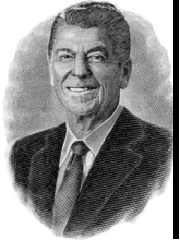
Government is not the solution, it's the problem
Five years after leaving office he had been diagnosed with the early stages of Alzheimer's, and said he had begun 'the journey that will lead me into the sunset of my life.'
His funeral was expected to be at the National Cathedral, an event likely to draw world leaders. The body was to be returned to California for a sunset burial at his library.
Although fiercely protective of Reagan's privacy, the former first lady let people know his mental condition had deteriorated terribly. Last month, she said: "Ronnie's long journey has finally taken him to a distant place where I can no longer reach him."
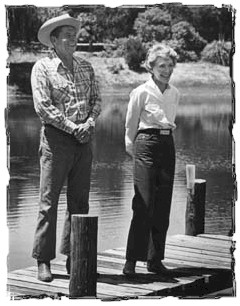
'Til they meet again
Over two terms, from 1981 to 1989, Reagan reshaped the Republican Party in his conservative image and fixed his eye on the demise of the Soviet Union and Eastern European communism.

Mr. Gorbachev, tear down that wall!
At the time of his retirement, his very name suggested a populist brand of conservative politics that still inspires the Republican Party.
He challenged the status quo on welfare and other programs that had put government on a growth spurt ever since Franklin D. Roosevelt's New Deal strengthened the federal presence in the lives of average Americans.
In foreign affairs, he built the arsenals of war while seeking and achieving arms control agreements with the Soviet Union.
He left office in 1989 with the highest popularity rating of any retiring president in the history of modern-day public opinion polls.
He had an uncommon ability as a communicator and his way of connecting with ordinary Americans, even as his policies infuriated the left and as his simple verities made him the butt of jokes. "Morning again in America" became his re-election campaign mantra in 1984, but typified his appeal to patriotrism through both terms.
Near-tragedy struck on his 70th day as president. On March 30, 1981, Reagan was leaving a Washington hotel after addressing labor leaders when a young drifter, John Hinckley, fired six shots at him. A bullet lodged an inch from Reagan's heart, but he recovered.
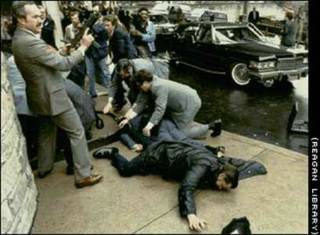
John Hinckley fails to bring him down
Four years later he was re-elected by an even greater margin, carrying 49 of the 50 states in defeating Democrat Walter F. Mondale, Carter's vice president.

"It's morning in America again"
1984 - Reagan wins again!"

Requiescat in Pace
Ronald Reagan, the cheerful crusader who devoted his presidency to winning the Cold War, trying to scale back government and making people believe it was 'morning again in America,' died Saturday after a long twilight struggle with Alzheimer's disease, a family friend said. He was 93.

Government is not the solution, it's the problem

Five years after leaving office he had been diagnosed with the early stages of Alzheimer's, and said he had begun 'the journey that will lead me into the sunset of my life.'
His funeral was expected to be at the National Cathedral, an event likely to draw world leaders. The body was to be returned to California for a sunset burial at his library.
Although fiercely protective of Reagan's privacy, the former first lady let people know his mental condition had deteriorated terribly. Last month, she said: "Ronnie's long journey has finally taken him to a distant place where I can no longer reach him."

'Til they meet again

Over two terms, from 1981 to 1989, Reagan reshaped the Republican Party in his conservative image and fixed his eye on the demise of the Soviet Union and Eastern European communism.

Mr. Gorbachev, tear down that wall!

At the time of his retirement, his very name suggested a populist brand of conservative politics that still inspires the Republican Party.
He challenged the status quo on welfare and other programs that had put government on a growth spurt ever since Franklin D. Roosevelt's New Deal strengthened the federal presence in the lives of average Americans.
In foreign affairs, he built the arsenals of war while seeking and achieving arms control agreements with the Soviet Union.
He left office in 1989 with the highest popularity rating of any retiring president in the history of modern-day public opinion polls.
He had an uncommon ability as a communicator and his way of connecting with ordinary Americans, even as his policies infuriated the left and as his simple verities made him the butt of jokes. "Morning again in America" became his re-election campaign mantra in 1984, but typified his appeal to patriotrism through both terms.
Near-tragedy struck on his 70th day as president. On March 30, 1981, Reagan was leaving a Washington hotel after addressing labor leaders when a young drifter, John Hinckley, fired six shots at him. A bullet lodged an inch from Reagan's heart, but he recovered.

John Hinckley fails to bring him down

Four years later he was re-elected by an even greater margin, carrying 49 of the 50 states in defeating Democrat Walter F. Mondale, Carter's vice president.

"It's morning in America again"
1984 - Reagan wins again!"


Requiescat in Pace

Here's a list of what I call Super Engines: Search Engines that take you to many other search engines.
Try these for a little break from your favorite Search Engine.
From Leiden University, A Collection of Special Search Engines, from Archaeoloogy to Zoology.
Academic Info is an educational subject Directory. You'll find plenty of information about Online Degree Programs and Test Preparation Resources.
The Search Engine Colossus is a French - English collection of fabulous academic sites.
AGRICOLA (AGRICultural OnLine Access) is a bibliographic database of citations to the agricultural literature created by the National Agricultural Library (NAL) and its cooperators. The database covers materials in all formats, including printed works from the 15th century. The records describe publications and resources encompassing all aspects of agriculture and allied disciplines: animal and veterinary sciences, entomology, plant sciences, forestry, fisheries, and more.
Thousands of AGRICOLA records are linked to full-text documents online, with new links added daily. AGRICOLA is searchable on the World Wide Web. For information on how to obtain library materials from NAL, see NAL's Document Delivery Services web site.
AllRefer is an "oldie but goodie" that has hundreds, if not thousands, of interesting sites.
Britain's Joint Information Services Committee has financed a very lovely site devoted to the Fine Arts, called Artifact.
BIOME is a collection of gateways which provide access to evaluated, quality Internet resources in the health and life sciences.
What BIOME is to health and life sciences, Bitpipe, Inc. is to computers and internet technology. You'll find white papers, product literature, webcasts, analyst reports, and case studies.
Real Internet searchers (only amateurs call themselves surfers) know that your searching must eventually take you to the "invisibe web." And your first stop should be Gary Price's Direct Search.
Don't forget to subscribe to his newsletter at ResourceShelf
For the young, and the young at heart, there's FactMonster.com, combination Atlas, Almanac, Dictionary and Encyclopedia, and more!
FIRST is devoted to military and strategic information, and lots of it. So, when you go over there ... pay attention!

Our future?
Try these for a little break from your favorite Search Engine.
From Leiden University, A Collection of Special Search Engines, from Archaeoloogy to Zoology.
Academic Info is an educational subject Directory. You'll find plenty of information about Online Degree Programs and Test Preparation Resources.
The Search Engine Colossus is a French - English collection of fabulous academic sites.
AGRICOLA (AGRICultural OnLine Access) is a bibliographic database of citations to the agricultural literature created by the National Agricultural Library (NAL) and its cooperators. The database covers materials in all formats, including printed works from the 15th century. The records describe publications and resources encompassing all aspects of agriculture and allied disciplines: animal and veterinary sciences, entomology, plant sciences, forestry, fisheries, and more.
Thousands of AGRICOLA records are linked to full-text documents online, with new links added daily. AGRICOLA is searchable on the World Wide Web. For information on how to obtain library materials from NAL, see NAL's Document Delivery Services web site.
AllRefer is an "oldie but goodie" that has hundreds, if not thousands, of interesting sites.
Britain's Joint Information Services Committee has financed a very lovely site devoted to the Fine Arts, called Artifact.
BIOME is a collection of gateways which provide access to evaluated, quality Internet resources in the health and life sciences.
What BIOME is to health and life sciences, Bitpipe, Inc. is to computers and internet technology. You'll find white papers, product literature, webcasts, analyst reports, and case studies.
Real Internet searchers (only amateurs call themselves surfers) know that your searching must eventually take you to the "invisibe web." And your first stop should be Gary Price's Direct Search.
Don't forget to subscribe to his newsletter at ResourceShelf
For the young, and the young at heart, there's FactMonster.com, combination Atlas, Almanac, Dictionary and Encyclopedia, and more!
FIRST is devoted to military and strategic information, and lots of it. So, when you go over there ... pay attention!

Our future?

June 04, 2004
According to a survey recently conducted by the American Association of University Women (AAUW) and The Allstate Foundation, sixty-one percent of people believe there will be a U.S. woman president in 20 years or less. Of that group, 37 percent believe it will occur in 10 to 20 years. A little less than one quarter (24 percent) are more optimistic, stating that a woman will occupy the nation's top post in 10 years or less.
The national public opinion survey was released today during AAUW's National Conference for College Women Student Leaders. Tonight the 2004 Women of Distinction Awards, the signature event of the Conference, will be presented during a ceremony sponsored by both organizations.

Go, Condi, Go!
The national public opinion survey was released today during AAUW's National Conference for College Women Student Leaders. Tonight the 2004 Women of Distinction Awards, the signature event of the Conference, will be presented during a ceremony sponsored by both organizations.

Go, Condi, Go!

Sixty years ago today, Rome was liberated by American forces. I'm sure it didn't take long for this news to reach the men on their way to Normandie - it must have been a real morale booster!
The 752nd Tank Battalion was activated at Ft. Knox, Kentucky, under the command of Lt. Col. Glen Anderson. Shortly after activation, the battalion moved to Ft. Lewis, Washington to complete its basic training. This phase of training was completed on 13 April 1942.
The 752nd shipped out to Italy, arriving near Naples on 12 January 1944. The 752nd saw its first combat action on 27 May 1944 as part of the Fifth Army's Anzio breakout. From this point on, the battalion quickly distinguished itself as a combat-worthy unit. The 752nd put in some hard fighting in the liberation of Rome.
But by June 4 1944, Rome was quiet. Propaganda leaflets dropped during the early morning hours by order of the commander of the Allied 15th Army Group, General Sir Harold R. L. G. Alexander, urged Romans "to stand shoulder-to-shoulder to protect the city from destruction and to defeat our common enemies."
If you're ever in Rome, take time out for a visit to the History Museum of the Liberation of Rome

The 752nd Tank Bn got a warm reception once inside Rome. Here, the crew of a B Co's Tank B10 stops to have their photo taken with the Roman family that took them in for dinner

The 752nd Tank Battalion was activated at Ft. Knox, Kentucky, under the command of Lt. Col. Glen Anderson. Shortly after activation, the battalion moved to Ft. Lewis, Washington to complete its basic training. This phase of training was completed on 13 April 1942.
The 752nd shipped out to Italy, arriving near Naples on 12 January 1944. The 752nd saw its first combat action on 27 May 1944 as part of the Fifth Army's Anzio breakout. From this point on, the battalion quickly distinguished itself as a combat-worthy unit. The 752nd put in some hard fighting in the liberation of Rome.
But by June 4 1944, Rome was quiet. Propaganda leaflets dropped during the early morning hours by order of the commander of the Allied 15th Army Group, General Sir Harold R. L. G. Alexander, urged Romans "to stand shoulder-to-shoulder to protect the city from destruction and to defeat our common enemies."
If you're ever in Rome, take time out for a visit to the History Museum of the Liberation of Rome

The 752nd Tank Bn got a warm reception once inside Rome. Here, the crew of a B Co's Tank B10 stops to have their photo taken with the Roman family that took them in for dinner

June 03, 2004
As a patriotic gesture after the tragedy of September 11, 2001, Bodger Seeds has again planted a Floral Flag in Lompoc, CA. It has been 50 years since Bodger has planted such a flag. There have been four Floral Flags planted by Bodger Seeds in Lompoc
during the last century: 1942, 1943, 1945, 1952. All of the flags were comprised of Red, White and Blue Larkspur flowers. Some of the flags were planted in a background of White Larkspur.

A close-up of the Bodger Flag
Between the field where the flag is planted there are more than 9 miles of flower fields that go all the way to the ocean. It's a beautiful place close to Vandenberg AFB.
Checkout the dimensions of the flag.
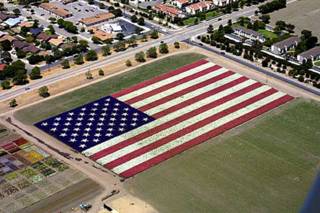
Aerial photo courtesy of Bill Morson
The 2002 Floral Flag is 740 feet long and 390 feet wide and maintains the proper Flag dimensions as described in Executive Order #10834. This Flag is 6.65 acres and is the first Floral Flag to be planted with 5 pointed Stars comprised of White Larkspur. Each Star is 24 feet in diameter; Each Stripe is 30 feet wide. This Flag is estimated to contain more than 400,000 Larkspur plants with 4-5 flower stems each for a total of more than 2 million flowers.

The White Larkspur - used for the stars
during the last century: 1942, 1943, 1945, 1952. All of the flags were comprised of Red, White and Blue Larkspur flowers. Some of the flags were planted in a background of White Larkspur.

A close-up of the Bodger Flag

Between the field where the flag is planted there are more than 9 miles of flower fields that go all the way to the ocean. It's a beautiful place close to Vandenberg AFB.
Checkout the dimensions of the flag.

Aerial photo courtesy of Bill Morson

The 2002 Floral Flag is 740 feet long and 390 feet wide and maintains the proper Flag dimensions as described in Executive Order #10834. This Flag is 6.65 acres and is the first Floral Flag to be planted with 5 pointed Stars comprised of White Larkspur. Each Star is 24 feet in diameter; Each Stripe is 30 feet wide. This Flag is estimated to contain more than 400,000 Larkspur plants with 4-5 flower stems each for a total of more than 2 million flowers.

The White Larkspur - used for the stars

As the 60th Anniversary of D-Day, June 6, 1944, approaches, I'll be posting unusual and interesting things about that momentous day.
Ernie Pyle's Brave Men is a collection of his newspaper columns from 1943 and 1944, in which he details the fighting in Europe primarily from the perspective of the common U.S. G.I. This angle of reporting brought the front-line war back to the families of those serving in the armed forces and endeared Pyle to the troops.
An excerpt:
Now that's what soldierin' is all about.

Ernie Pyle's grave at the "Punchbowl Cemetery"
(National Military Cemetery of the Pacific)
Ernie Pyle's Brave Men is a collection of his newspaper columns from 1943 and 1944, in which he details the fighting in Europe primarily from the perspective of the common U.S. G.I. This angle of reporting brought the front-line war back to the families of those serving in the armed forces and endeared Pyle to the troops.
An excerpt:
{the eve of D-Day} They joked in the sleepy predawn darkness. One said to the other, "What are you dressed up for, a masquerade?"If they had any personal concern about themselves they didn't show it.
Everybody was overloaded with gear. One officer said, "The Germans will have to come to us. We can never get to them with all this load."
The most-repeated question was, "Is this trip necessary?"
Those men had spent months helping to plan a gigantic invasion. They were relieved to finish the weary routine of paper work at last, and glad to start putting their plans into action. If they had any personal concern about themselves they didn't show it.
Now that's what soldierin' is all about.

Ernie Pyle's grave at the "Punchbowl Cemetery"
(National Military Cemetery of the Pacific)

Subscribe to:
Posts (Atom)

